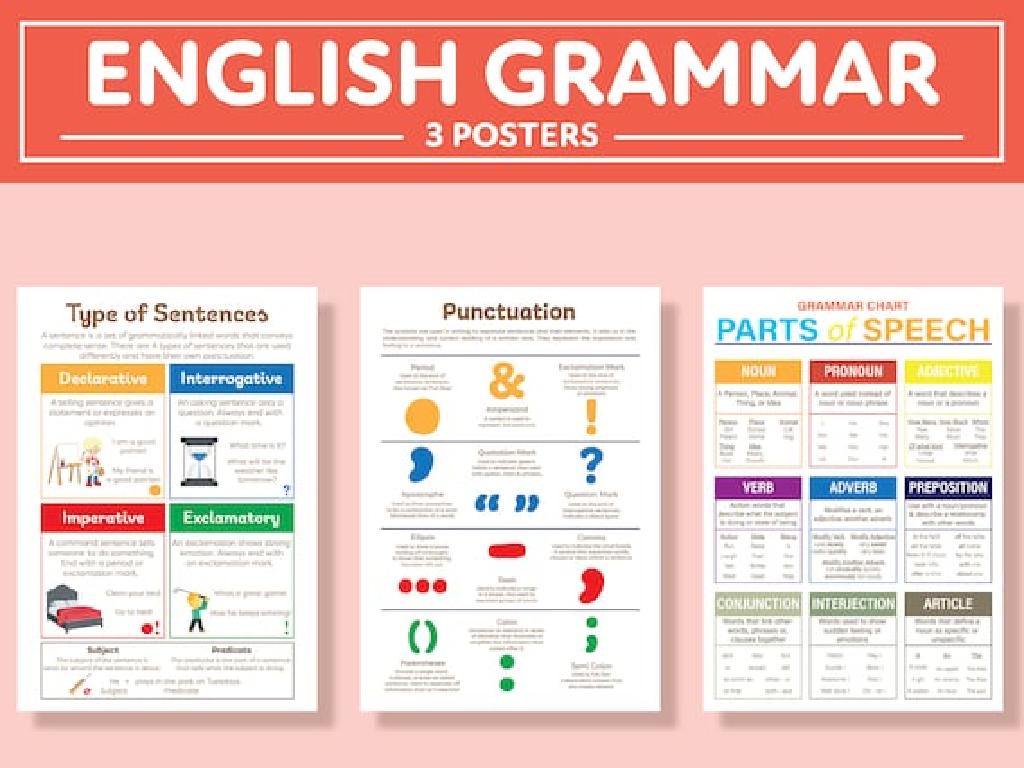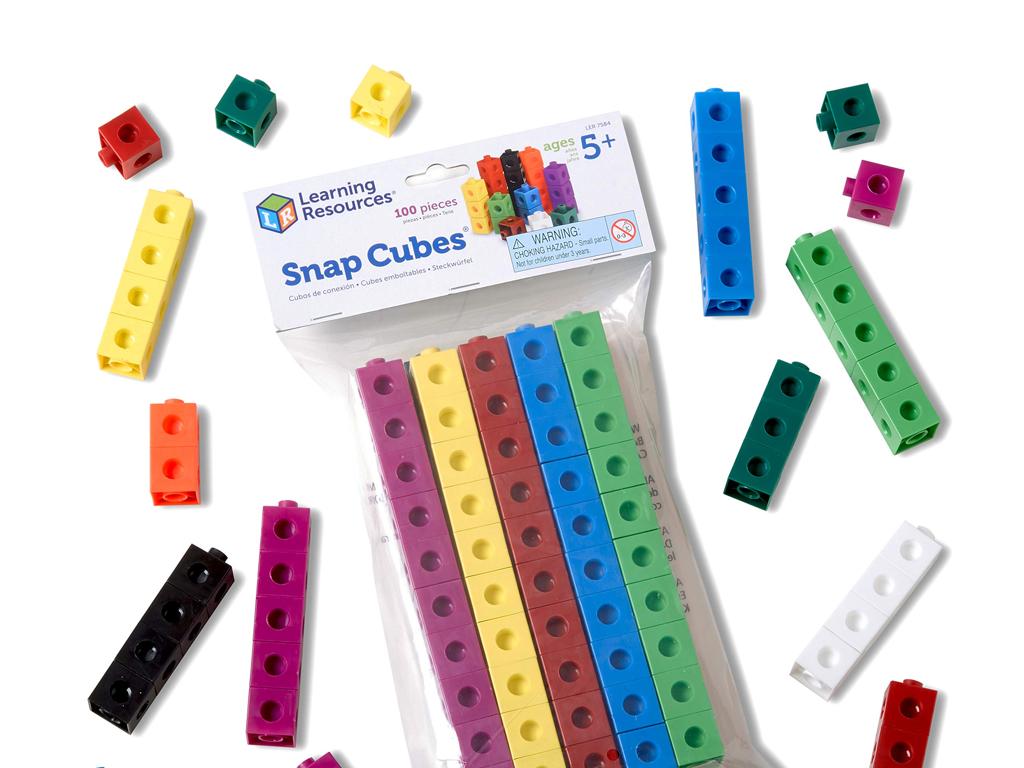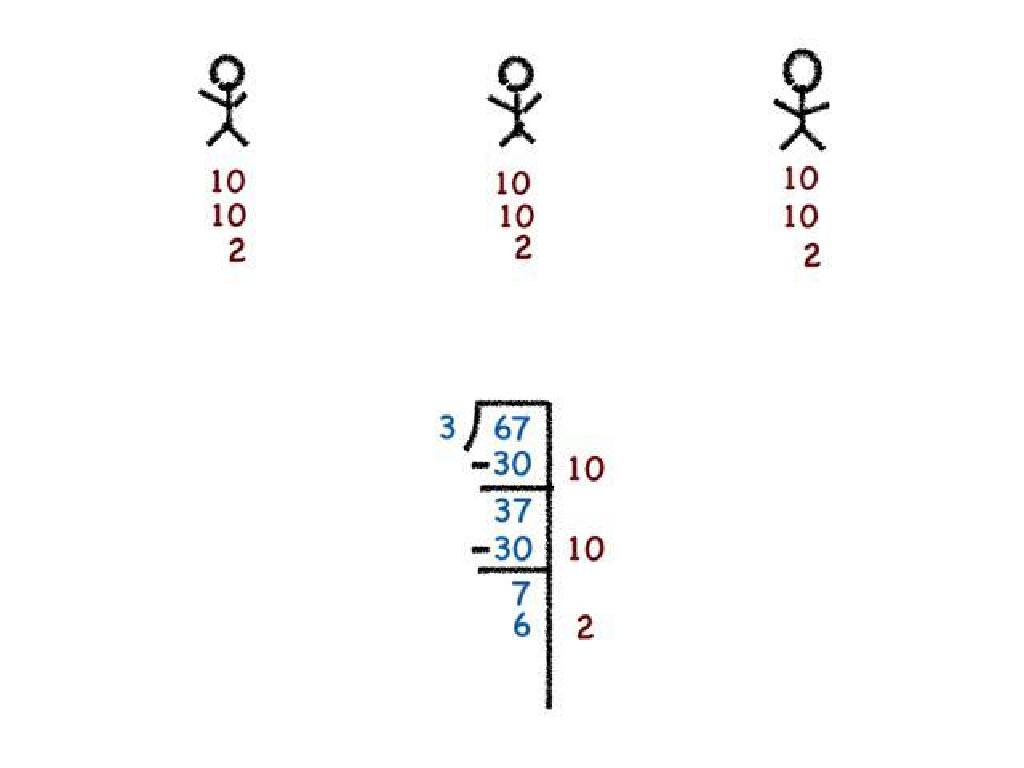Identify Rectangles
Subject: Math
Grade: Fourth grade
Topic: Quadrilaterals
Please LOG IN to download the presentation. Access is available to registered users only.
View More Content
Today’s Adventure: Identifying Rectangles
– Quadrilaterals: Four-sided shapes
– Rectangles: A special quadrilateral
– Opposite sides equal and parallel, four right angles
– Characteristics of rectangles
– Two long sides, two short; all angles are 90 degrees
– Exploring rectangle family members
– Squares are rectangles too, with all sides equal
|
Begin the lesson by explaining that quadrilaterals are shapes with four sides. Then, focus on rectangles, a type of quadrilateral with special properties such as opposite sides that are equal and parallel, and four right angles. Use visual aids to show rectangles and discuss their characteristics, such as having two longer sides and two shorter sides, but all angles being 90 degrees. Highlight that all squares are rectangles with the added feature of having all sides of equal length. Encourage students to look for and identify rectangles in the classroom and at home as a practical application of the lesson.
Exploring Quadrilaterals: Identifying Rectangles
– Quadrilateral: a four-sided shape
– Think of it like a family name for shapes with four straight sides.
– Various examples of quadrilaterals
– Squares, rectangles, and kites are all part of this family.
– Key characteristics of quadrilaterals
– They have four angles and their sides can be of different lengths.
– Recognizing rectangles among them
– Rectangles have 4 right angles and opposite sides are equal.
|
Begin the lesson by defining a quadrilateral and ensuring students understand the basic requirement of having four sides. Provide examples of quadrilaterals such as squares, rectangles, trapezoids, and kites to illustrate the variety within this category. Discuss the characteristics that all quadrilaterals share, including having four angles, which can vary in measurement. Emphasize that rectangles are a special type of quadrilateral with four right angles and opposite sides that are equal in length. Use visual aids to help students identify rectangles and differentiate them from other quadrilaterals. Encourage students to find and draw examples of quadrilaterals and rectangles from their surroundings or imagination.
Meet the Rectangle
– Rectangles: A type of quadrilateral
– Unique features of rectangles
– A rectangle has special properties that set it apart from other quadrilaterals.
– Four right angles
– Each corner of a rectangle forms a 90-degree angle.
– Opposite sides are equal and parallel
– This means the sides facing each other are the same length and won’t meet if extended.
|
This slide introduces the rectangle as a member of the quadrilateral family, emphasizing its unique characteristics. Rectangles are defined by having four right angles, which means each angle is 90 degrees. This is a key property that students can easily identify. Additionally, rectangles have pairs of opposite sides that are equal in length and parallel, which means they run alongside each other at the same distance apart forever. Use real-life examples like books and doors to help students recognize rectangles in their environment. Encourage them to draw their own rectangles and identify the properties discussed. This will prepare them for understanding more complex quadrilateral shapes in future lessons.
Properties of Rectangles
– Opposite sides are equal
– Like a door’s height and width
– Opposite sides are parallel
– Train tracks run parallel too
– All angles are 90 degrees
– Like the corners of a book
– Sides meet at right angles
– Where the walls and floor meet
|
This slide introduces students to the fundamental properties of rectangles, which is a type of quadrilateral. Emphasize that rectangles have pairs of opposite sides that are not only equal in length but also run parallel to each other, much like the opposite edges of a door or the rails of a train track. Highlight that every angle in a rectangle is a right angle, which is 90 degrees, similar to the corners of a book or a square. Explain that the term ‘right angles’ refers to the way sides meet, just as the walls of a room meet the floor. Use real-life examples to help students visualize these concepts. Encourage students to draw their own rectangles and identify these properties in their drawings.
Identifying Rectangles
– Spotting rectangles among shapes
– Look for 4 right angles and opposite sides equal
– Practice identifying rectangles
– We’ll look at various shapes and pick out rectangles
– Understanding squares as rectangles
– Squares have 4 right angles and all sides equal, making them rectangles too
|
This slide is aimed at helping fourth-grade students recognize rectangles among various shapes. Start by explaining the key characteristics of rectangles: four sides, four right angles, and opposite sides that are equal in length. Use visual aids to show different quadrilaterals and have students practice by identifying which ones are rectangles. Clarify the concept that all squares are rectangles because they meet the rectangle’s criteria, but not all rectangles are squares, as rectangles can have sides of different lengths. Encourage students to ask questions and provide plenty of examples to ensure understanding.
Rectangles in Real Life
– Spot rectangles in our surroundings
– Common examples: doors, books, screens
– Rectangles are everywhere! Look at doors, books, and various screens.
– Classroom scavenger hunt activity
– Find as many rectangles as you can in 5 minutes.
– Understanding rectangles’ properties
– Rectangles have 4 sides and 4 right angles.
|
This slide aims to help students recognize rectangles in everyday objects, reinforcing the concept that geometry is not just in textbooks but all around us. Start by asking students to name objects they believe are shaped like rectangles. Then, show them common examples such as doors, books, and screens to solidify their understanding. For the activity, have students search the classroom for rectangles and share their findings with the class. This will make the learning process interactive and fun. As a teacher, prepare to guide them in identifying the properties of rectangles during the scavenger hunt, such as opposite sides being equal and having four right angles, to deepen their comprehension.
Let’s Draw Rectangles!
– Use a ruler to draw straight lines
– Practice rectangles of various sizes
– Try small, medium, and large rectangles
– Recall rectangle properties
– Opposite sides are equal and parallel
– Apply properties in drawing
– Ensure right angles and equal diagonals
|
This slide is designed to engage students in a hands-on activity to reinforce their understanding of rectangles. Provide rulers to the students and demonstrate how to use them to draw straight lines. Encourage them to draw rectangles of different sizes to understand that size does not change the properties of a rectangle. Remind them of the key properties of rectangles: opposite sides are equal and parallel, and all angles are right angles. As they draw, ask them to check their work by measuring the sides and angles to ensure they have applied the properties correctly. This activity will help solidify their understanding of rectangles and how to identify them.
Class Activity: Rectangle Collage Creation
– Gather rectangle images/objects
– Find items at home or in magazines that are shaped like rectangles
– Create a collage on poster paper
– Arrange your rectangles creatively on a large poster
– Share your collage with the class
– Explain your choices when presenting
|
This activity is designed to help students identify rectangles in the world around them. Provide students with poster paper and access to magazines, newspapers, or printed images. Encourage them to look for everyday objects that have a rectangular shape, such as doors, books, or electronic devices. Once they have a collection of images and objects, they can create a collage by gluing these onto the poster paper. When sharing with the class, prompt students to discuss why they chose each item and how it represents a rectangle. This will reinforce their understanding of rectangles and their properties. Possible variations of the activity could include creating a digital collage, using fabric or natural materials, or focusing on rectangles found in a specific context like architecture or nature.
Quiz Time: Identifying Rectangles
– Review rectangle properties
– Find rectangles in pictures
– Look for opposite sides equal and all angles 90°
– True or False: Squares as rectangles
– Remember, squares have equal sides and 4 right angles
– Explain your answers
– Share why a shape is or isn’t a rectangle
|
This slide is designed to be an interactive quiz for students to apply their knowledge of rectangles. Start by reviewing the key properties of rectangles, such as having opposite sides that are equal and all angles being right angles. Present a series of pictures and ask students to identify the rectangles within them. Then, pose the true or false question about squares being rectangles to test their understanding of shape classification. Encourage students to explain their reasoning for each answer, reinforcing their comprehension of the characteristics that define rectangles. This activity will help solidify their ability to recognize rectangles and distinguish them from other quadrilaterals.
Conclusion: Recognizing Rectangles
– Excellent work on rectangles!
– Homework: Find and draw 5 rectangles
– Look around your house for any rectangles
– Discover rectangles in your home
– Draw them in your notebook or on paper
– Next class: Meet more quadrilaterals
|
Students have done a great job learning to identify rectangles, a fundamental shape in geometry. For homework, they are tasked with finding rectangles in their everyday environment, which helps them recognize the presence and importance of geometric shapes in real life. Encourage them to think creatively and look for rectangles in places they might not expect. This activity will also reinforce their understanding of rectangles and their properties. In the next class, we will expand our knowledge to other quadrilaterals, such as squares, trapezoids, and parallelograms, to appreciate the diversity within the quadrilateral family. Prepare to introduce these new shapes with visual aids and interactive activities.






